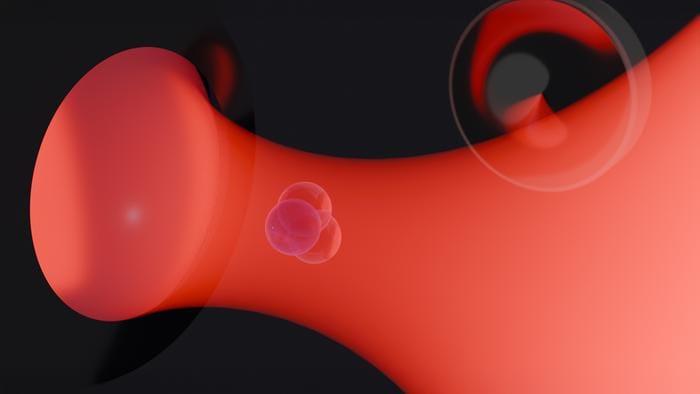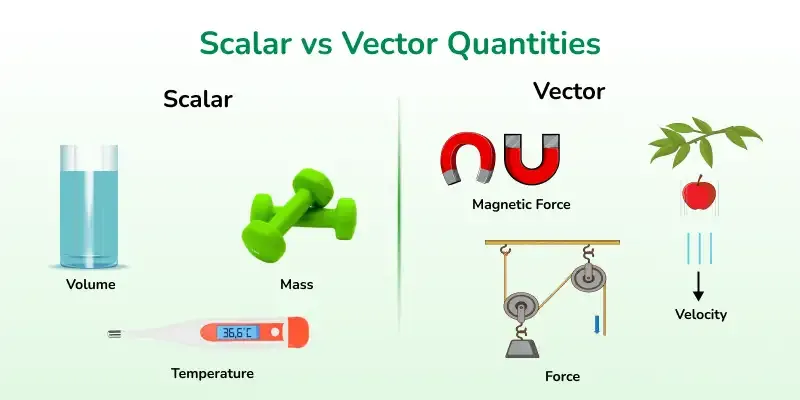In a quiet laboratory in Zurich, three impossibly tiny glass spheres hang in the air, stacked like a tower of shimmering ice cream scoops — but a hundred thousand times smaller. Their entire cluster is so delicate that its diameter is ten times smaller than the width of a single human hair. And yet, suspended by nothing more than light, it floats as though gravity itself had been switched off.
It’s not science fiction. It’s quantum science at its most daring.
Researchers at ETH Zurich have achieved what once seemed impossible: keeping these nanoscopic glass spheres almost perfectly still in mid-air, without freezing them to near absolute zero. Using carefully tuned laser beams and an optical device, they’ve managed to suppress almost every classical source of movement, revealing the subtle, irreducible trembling that quantum physics predicts should remain. Their work, published in Nature Physics, marks a milestone in the path toward powerful quantum sensors — tools that may one day detect forces as faint as the whispers of dark matter.
A Dance That Cannot Stop
The team, led by adjunct professor of photonics Martin Frimmer, began by levitating the nano-glass tower with an “optical tweezer,” a technology that uses the focused electric field of polarized laser light to trap particles in place inside a vacuum chamber. Once airborne, the three-glass-sphere cluster seemed almost motionless — almost.
Even with gravity tamed, the object shivered, just as a compass needle quivers before settling toward north. But here the motion was far stranger: about a million tiny rotational oscillations per second, each so small they tilted the object by only a few thousandths of a degree. This is not mechanical noise. It’s the zero-point fluctuation — the restless baseline motion that, according to quantum mechanics, can never be erased.
“Quantum theory tells us that no object can be perfectly still,” says Lorenzo Dania, the postdoctoral researcher and first author of the study. “The bigger the object, the smaller these fluctuations become — and the harder they are to detect. That’s why what we’ve done here is so exciting.”
Breaking Several Records at Once
Until now, no one had measured these quantum jitters so precisely in an object of this size. The ETH Zurich team succeeded because they eliminated nearly every disturbance from the classical world: stray air molecules, vibrations from the lab, and fluctuations in laser intensity. As a result, they could attribute 92% of the object’s motion to quantum physics itself, leaving only 8% from classical sources.
“Beforehand, we didn’t expect to achieve such a high level of quantum purity,” admits Dania. “It’s rare to have an experiment where the quantum nature dominates so clearly.”
And they didn’t need to chill the system to just a fraction of a degree above absolute zero — a step that normally requires massive, costly refrigeration units. Instead, they did it all at room temperature. That’s the part that makes other quantum physicists raise their eyebrows.
Frimmer puts it in everyday terms: “It’s like building a truck that carries more cargo than anyone thought possible — but burns far less fuel.”
Quantum Giants in a Tiny World
From an ordinary perspective, the levitating glass tower is absurdly small. But from a quantum perspective, it’s massive. While many experiments deal with individual atoms or molecules, this nano-object is made of hundreds of millions of atoms acting as a single, controllable quantum system. For future applications in quantum technology, this size is crucial: larger systems could be more useful as precision sensors or as testbeds for new physics.
Such experiments could even probe the still-mysterious connection between quantum mechanics — which governs the micro-world — and gravity, which rules the macro-world. In principle, these levitating spheres could act as miniature laboratories for some of the deepest questions in physics.
From the Lab to the Real World
The optical tweezer setup is straightforward in concept: a high-quality lens focuses polarized laser light into a vacuum chamber, creating a point where the electric field traps and aligns the particle. With the right tuning, the object can hover indefinitely, free from most environmental disturbances.
This “quiet” environment is exactly what’s needed for the next phase of quantum sensing. A system with such high quantum purity could detect ultra-small forces — the impact of a single gas molecule, or the tug of an as-yet-undiscovered particle. In time, it could even help physicists search for the elusive particles that make up dark matter.
The possibilities go well beyond fundamental research. Frimmer envisions quantum sensors that could, one day, transform navigation, medical imaging, and environmental monitoring.
“Imagine a vehicle that can navigate precisely even with no GPS signal,” he says. “Or medical imaging that detects signals far too faint for today’s scanners, even in noisy hospital environments.”
A Leap Toward Practical Quantum Technology
The achievement’s most tantalizing feature is its practicality. Because the system operates at room temperature, it avoids the energy-hungry, space-consuming cryogenics that often hold back quantum devices from leaving the lab. It’s simpler, more cost-effective, and — crucially — miniaturizable.
“This is a perfect starting point,” Frimmer says. “We now know how to suppress almost all unwanted motion and reach a controllable quantum state without expensive cooling. That opens the door for new designs and applications.”
The leap from fundamental physics experiment to real-world technology will still take years. But with this work, the ETH Zurich team has moved a giant step closer to turning delicate quantum phenomena into robust, deployable tools.
For now, three tiny glass spheres hover silently in a Zurich lab, trembling in a way that only quantum physics can explain — a shimmering, levitating promise of the future.
More information: High-purity quantum optomechanics at room temperature, Nature Physics (2025). DOI: 10.1038/s41567-025-02976-9






